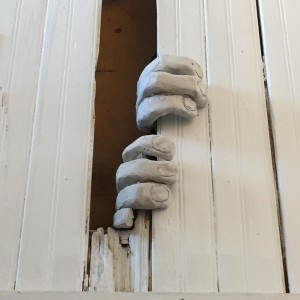
No one ever told me that I’d still have back-to-school nightmares, long after I'd actually finished school. Or that when September rolled around, my back-to-school nightmares would take me back to places I'll probably never set foot in again in my actual life: back to the squat brick building in Kansas City, Missouri where I attended first and second grade as a new and terrified student. Or back on the sprawling campus where I spent one year as a third grader in a private school, where my parents enrolled me last-minute after an almost act of violence at the other. There, I was a new and terrified student (sense a pattern?), always afraid I'd lose my way in-between the glossy buildings and well- trimmed hedges. I spent many of my young years scared: the new kid, the shy kid, the one nervously navigating new schools, new social groups, new spheres.
And if my dreams are to be believed, there’s still a part of me that is.
I’ve been thinking a lot about my dreams recently. First and most obviously because they’ve started again–it's that time of year, after all. And I am going back to school: not as a student, but as a teacher, which I’m learning comes with its own baggage and nerves (another surprise).
But there’s another reason my dreams are so vividly on my mind. I’m currently working on a children's book that's based, in part, on my own childhood. At first, this was a light kind of borrowing. While I was shy with outsiders as a child, I was outspoken with my family, and they still delight in telling funny stories of my younger self’s misnomers and outrageous opinions. My family also moved frequently, and I lived many places in the United States-- an experience which led to moments of humor, but also, to painful moments of misunderstanding, episodes which drew sharp attention to the fact of my own mixed-race identity.
These were the experience I planned to draw on in my book, using my stories to give basic form to my narrative, and then letting fiction fill in the rest. Borrow what I wanted and then let artistic license close the gaps: while not an easy task by any means, it seemed straightforward.
Only, as I’ve been learning over the two years that I’ve been writing my story, memory, fact and fiction aren’t so easily or neatly contained. Again and again, as I revise scenes that aren’t working, coming up with increasingly fictive encounters and solutions to my character’s problems, I’ve been disconcerted to stumble upon the condensed and often painful realities that lurk at their centers. So it’s not just that I didn’t mean to write about my difficulties with reading as a child in my book – I didn’t want to write about them. They’re painful, they’re raw, they’re the stuff of my back-to-school nightmares.
So imagine my surprise when, on an imaginary field trip to the science museum, my eight-and-a-half year old character revealed that it was these same difficulties, this same pain, which fuels her dreams and anxieties. It turns out that she’s been this way all along; it turns out that this has always been her story. And it turns out that you don’t just escape the stories you don’t want to tell: an idea which as I type it, seems pretty obvious. Yet it still manages to surprise me each time.
Like my dreaming return to the hallways of first, second, and third grade, these stories cycle through outside of my control, popping up at what seems like random, appearing when I'm not paying attention. Or maybe they’re right on schedule, entwined with something intrinsic in my process of imagining, just as fall will perhaps always trigger my dreams of going back to school. In them, there’s the fear: the scariness of unknown people and places, the unpredictability of winding hallways and looming campus buildings. But there’s excitement there too: the promise of new people, new beginnings, and as always, the sometimes pain, sometimes thrill of old and new stories to uncover.
-Susan Tan, 2015 Gish Jen Fellow for Emerging Writers

